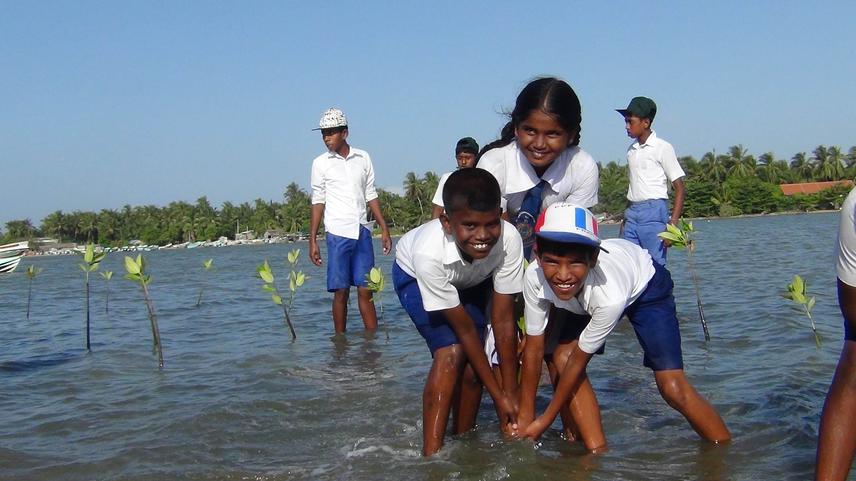E. M. Lalith Ekanayake
Other projects
11 Nov 2013
Conduction of Awareness Programmes on Sea Turtles and Coastal Biodiversity Conservation for the Coastal Communities in Southern and Eastern Coast of Sri Lanka
9 Jan 2017
Continuation of the Sea Turtles and Coastal Biodiversity Conservation in Kalpitiya Peninsular of Sri Lanka
22 Feb 2018
Continuation of the Sea Turtles & Coastal Biodiversity Conservation in Kalpitiya Peninsula, Adjacent Mainland and Nearby Inhabited Small Islands, Sri Lanka
13 Feb 2020
Continuation of the Sea Turtles & Coastal Biodiversity Conservation in Kalpitiya Peninsula, Sri Lanka
Educate the fishermen & school children to reduce the threat to the sea turtles and coastal environment while initiating long-term conservation activities.

Mangroves.
The fishing communities in the North West coast of Sri Lanka depend on seasonal, artisanal gill net fisheries targeting pelagic shoaling fish, particularly the flying fish (Exocoetidae sp). Previous studies have revealed that these fisheries are plagued by unwanted and expensive interactions with olive ridley turtles. The turtles actively seek and target gill nets containing captured fish to feed, but in the process often get entangled, causing of damage for each entanglement. In addition, once turtles are entangled they can drown, but more often they are hauled alive and are extremely aggressive. In response, fishers either beat the turtles’ heads until they are rendered unconscious, or hack off the turtles’ body parts to make disentanglement easier. The turtles are then either discarded at sea, or brought back to shore for illegal processing for their meat for local consumption. Harming and killing the turtles, or possessing their body parts is prohibited under the 1972 by Fauna and Flora Protection Ordinance (FFPO, 1972; amendment 1993 and 2009). Through these unwanted turtle interactions, fishing families are therefore compromised through significant costs incurred in repairing damaged gear, as well as risk of illegal activity under the national legislation.
Public awareness has been identified as a major issue by the global, regional and national action plans for the conservation and management of sea turtles. Such awareness programmes have been a key part of sea turtle conservation activities by many conservation organizations’ throughout the world. School kids and local fishermen’s in the coastal areas of northwestern province will be the target group of this proposed programme. Further the programme will extend to aware the lagoon fishermen in the Putlam lagoon which is killing turtles entering the lagoon and also damaging mangroves at the lagoon.
The aims and objectives of these programmes are to increase the education and awareness on sea turtle biology & conservation, legislation and law enforcement on sea turtles among the target group. Further it will increase the community knowledge on sustainable use of surrounding natural coastal resources and reduce the turtle by-catch which is the major threat to sea in the area. The coastal community will be actively participate for the programme and provide valuable information such as tag recoveries. The availability of educational materials and news paper articles on sea turtles and coastal ecosystem in Sri Lanka will be increased.